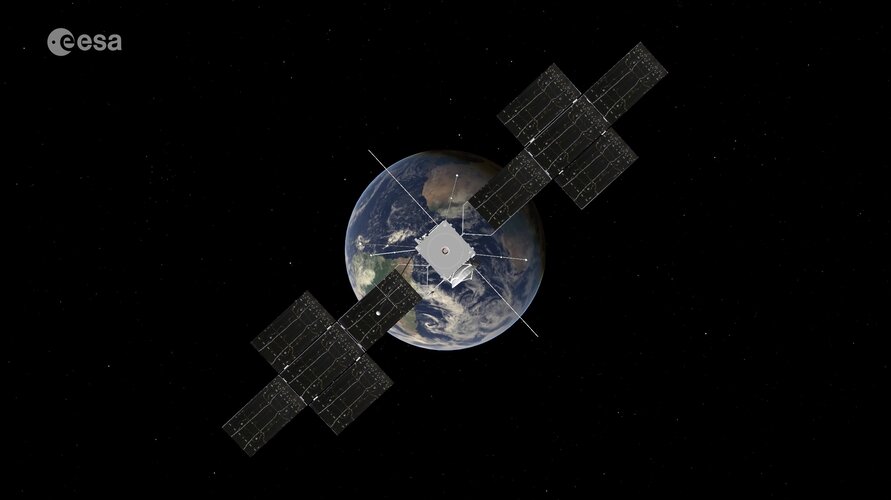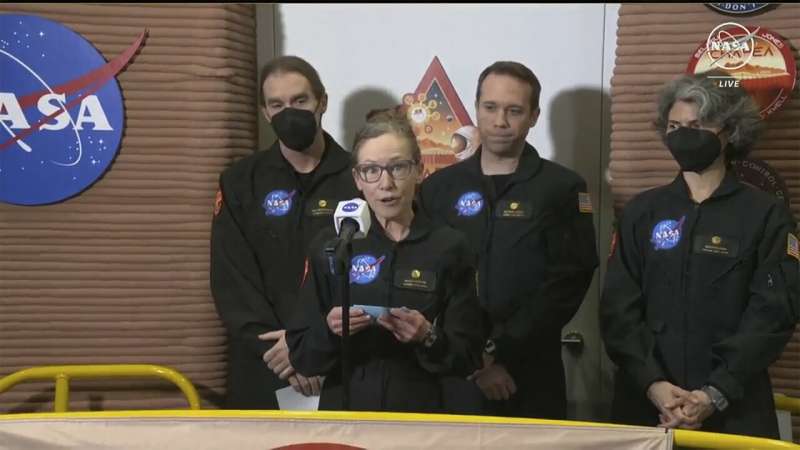Military-to-civilian space traffic transition nears critical juncture
Monday, 08 July 2024 12:00
Call for ideas on navigation demonstrators and technologies
Monday, 08 July 2024 11:13
Do you want to help shape the future of European satellite navigation? ESA is issuing an open call via OSIP for companies and researchers to help identify future navigation demonstrators and disruptive technologies that will shape the landscape of satellite navigation in the coming decades.
Juice's lunar-Earth flyby link to blog
Monday, 08 July 2024 11:00
Blog: Juice's lunar-Earth flyby
Follow for the latest updates as ESA's Jupiter mission swings through the Earth system this summer
Space Team Europe for Ariane 6: Alexis Van Lysebeth
Monday, 08 July 2024 07:00 Video:
00:07:35
Video:
00:07:35
They say it takes a village to raise a child. To launch a rocket, we have the combined expertise and passion of Space Team Europe. Alexis Van Lysebeth is one of many making the first Ariane 6 launch possible and has been interviewed as part of a series highlighting some of the people that make up this dream team.
Working for Belgian company SABCA, Alexis is part of the team supplying the actuation systems for Ariane 6. The actuators have been upgraded for Ariane 6 and will be electromechanical – meaning electiricy is used to turn them on
Crew of NASA's earthbound simulated Mars habitat emerge after a year
Sunday, 07 July 2024 11:22
Low-intensity explosion caused Russian satellite to spew debris
Saturday, 06 July 2024 23:59

Organic material from Mars reveals the likely origin of life's building blocks
Saturday, 06 July 2024 00:01 Two samples from Mars together deliver the "smoking gun" in a new study showing the origin of Martian organic material. The study presents solid evidence for a prediction made over a decade ago by University of Copenhagen researchers that could be key to understanding how organic molecules, the foundation of life, were first formed here on Earth.
In a meteor crater on the red planet, a sol
Two samples from Mars together deliver the "smoking gun" in a new study showing the origin of Martian organic material. The study presents solid evidence for a prediction made over a decade ago by University of Copenhagen researchers that could be key to understanding how organic molecules, the foundation of life, were first formed here on Earth.
In a meteor crater on the red planet, a sol Satellite surveillance: China cautions public about unwittingly leaking secrets
Saturday, 06 July 2024 00:01 China's Ministry of State Security issued an online warning on Sunday, urging citizens to be cautious about sharing information that could be exploited by foreign intelligence agencies. The statement highlights the increasing use of space-based technology for espionage, with foreign actors leveraging remote sensing satellites to conduct real-time surveillance of China.
The MSS emphasizes
China's Ministry of State Security issued an online warning on Sunday, urging citizens to be cautious about sharing information that could be exploited by foreign intelligence agencies. The statement highlights the increasing use of space-based technology for espionage, with foreign actors leveraging remote sensing satellites to conduct real-time surveillance of China.
The MSS emphasizes Vyoma Awarded Two European Defence Fund Contracts to Enhance Space Security
Saturday, 06 July 2024 00:01 Vyoma, a Germany-based company providing Space Domain Awareness capabilities, has been awarded two contracts by the European Defence Fund (EDF) programme of the European Commission. Specifically, the EMISSARY and STAALION projects seek to augment European intelligence sovereignty and enhance threat response capabilities. These contracts represent a significant milestone in Vyoma's mission to emp
Vyoma, a Germany-based company providing Space Domain Awareness capabilities, has been awarded two contracts by the European Defence Fund (EDF) programme of the European Commission. Specifically, the EMISSARY and STAALION projects seek to augment European intelligence sovereignty and enhance threat response capabilities. These contracts represent a significant milestone in Vyoma's mission to emp Scientists clarify origins of Lunar metallic iron
Saturday, 06 July 2024 00:01 In a study published in Nature Astronomy, Profs. SHEN Laiquan, BAI Haiyang, et al. from Prof. WANG Weihua's group at the Institute of Physics of the Chinese Academy of Sciences have clarified the respective effects of irradiation and impacts on the formation of metallic iron nanoparticles (npFe0).
Based on precise observations of glass beads returned by the Chang'e-5 mission, they showed t
In a study published in Nature Astronomy, Profs. SHEN Laiquan, BAI Haiyang, et al. from Prof. WANG Weihua's group at the Institute of Physics of the Chinese Academy of Sciences have clarified the respective effects of irradiation and impacts on the formation of metallic iron nanoparticles (npFe0).
Based on precise observations of glass beads returned by the Chang'e-5 mission, they showed t Gilat to support critical connectivity requirements for the US DOD
Saturday, 06 July 2024 00:01 Gilat Satellite Networks Ltd. (NASDAQ, TASE: GILT) has announced that Gilats wholly owned US-based subsidiary, DataPath Inc, received over $9 million in orders in support of the US Department of Defense and other agencies worldwide participating in Field Service and Technical Service Programs.
DataPath is deploying technical services and field services in Europe, the Middle East, and the U
Gilat Satellite Networks Ltd. (NASDAQ, TASE: GILT) has announced that Gilats wholly owned US-based subsidiary, DataPath Inc, received over $9 million in orders in support of the US Department of Defense and other agencies worldwide participating in Field Service and Technical Service Programs.
DataPath is deploying technical services and field services in Europe, the Middle East, and the U MIT scientists develop way to toughen up 'good' bacteria, extend shelf life
Saturday, 06 July 2024 00:01 Massachusetts Institute for Technology officials said Friday its researchers have developed a way to enable microbes used in medicines and agriculture to survive extreme conditions, including the rigors of processing them into tablets with extended shelf-life.
The technique pioneered in the lab of Giovanni Traverso, an associate professor of mechanical engineering, utilizes a range of f
Massachusetts Institute for Technology officials said Friday its researchers have developed a way to enable microbes used in medicines and agriculture to survive extreme conditions, including the rigors of processing them into tablets with extended shelf-life.
The technique pioneered in the lab of Giovanni Traverso, an associate professor of mechanical engineering, utilizes a range of f China's Fengyun-3F satellite begins operational services
Saturday, 06 July 2024 00:01 The Fengyun-3F (FY-3F) satellite officially commenced operational services on Monday following ground and application system in-orbit testing reviews and operational trial runs, according to its ground application system operator, China Meteorological Administration (CMA).
The FY-3F satellite will take over the in-orbit duties of the FY-3C satellite and provide services in areas such as we
The Fengyun-3F (FY-3F) satellite officially commenced operational services on Monday following ground and application system in-orbit testing reviews and operational trial runs, according to its ground application system operator, China Meteorological Administration (CMA).
The FY-3F satellite will take over the in-orbit duties of the FY-3C satellite and provide services in areas such as we 




